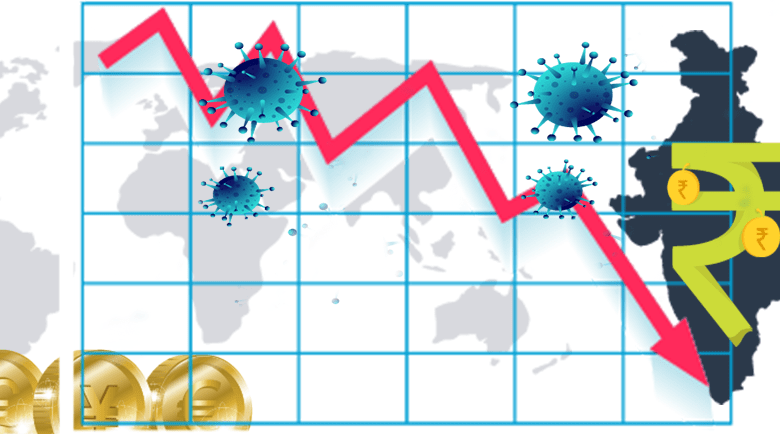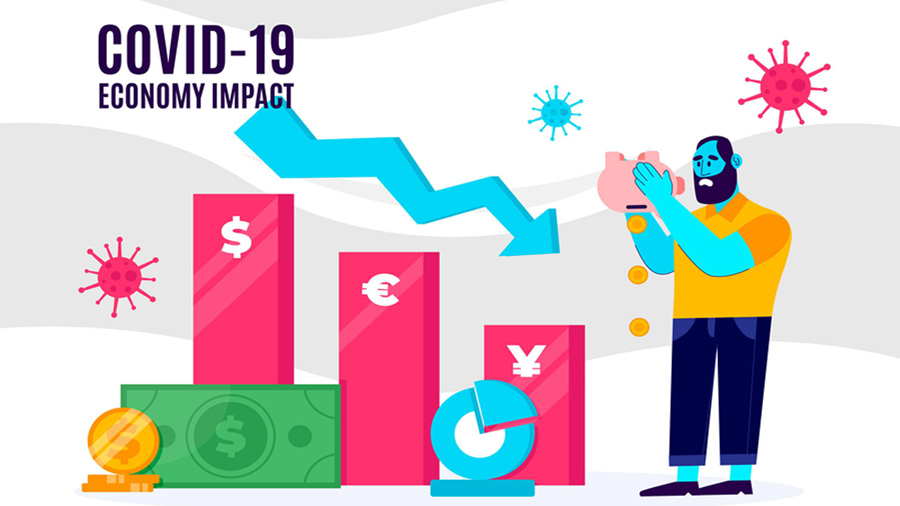Economic Downfall: India’s Growth Forecast Slashed To 8.3% For FY22 By The World Bank

India’s economy is struggling to balance the blocks of triumph. As the COVID-19 pandemic knocked upon India’s door, the economy, GDP, businesses, markets, and what not else, have been struggling to keep themselves going.
Not only that, this downfall in the economy has been the worst recession the country has ever seen! Before the independence, the people worked hard and helped India reach a righteous path from where it kept touching sky-high limits. The economy was performing well before 2014, but after the Narendra Modi administration, it kept dipping to reach where it is now.

The “all-around-mismanagement” is responsible for the slowdown of the economy, as Rahul Gandhi has mentioned. The economic shocks like the demonetization of high-denomination currency in 2016, and the introduction of dodgy GST togetherly led India’s economic path into recession. The GDP has been sharply falling since then, and after the arrival of COVID, it is down to 7-8% If correct measures aren’t taken soon, then the country will be back to where it earlier was.
Even though PM Modi didn’t close any markets officially during the second wave, it was hit more severely as compared to 2020, when the country was in a nationwide lockdown. So it is evident that lockdown isn’t the primary reason for such a tremendous downfall of the Indian economy.
World Bank reports an 8.3% growth of the Indian economy in FY22.
The World Bank has slashed India’s growth forecast for FY22 to 8.3%. Earlier in April, it was estimated to be 10.1% but after looking at the aftermath of the second wave, it has been reduced by almost two times! India being the third-largest economy of Asia was struggling with the world’s deadliest second wave of COVID and the healthcare systems and markets experienced an abhorrent outcome because of it.

“In India, the second wave of the covid-19 undermine a more dramatic-than-expected rebound in economic activity in the second half of the 2020/21 financial year, in particular in the services sector. With the rise in covid-19 cases, the people going for work, and the shopping areas, it has been reduced, again, more than one-third over, they are already a pandemic level as of March, in part due to the restrictions on movement, ” the World Bank said in its latest Global Economic Prospects report.
The economic activities will be supported by the policies that will mandate high spending on the infrastructure, health, rural development, more stimulating improvement in manufacturing and services in FY22. “The first wave of COVID saw less collapse and recovery of the economy. The pandemic will test the investment and consumption of goods and services. The economic growth for India in FY22-23 will be merely 7.5% showing little impact on households, corporates. Consumer confidence will be on the lower side and unemployment can continue to prevail.
The World Bank explained the significance of higher expenditure spending on medical health infrastructure in the country in FY22 that can help in post-pandemic development. “As the Indian government is working on health-related medical development, we can see India recovering smoothly after the pandemic. As the economy kept deteriorating during the second wave, the RBI announced several measures to strengthen the liquidity equipment of MSEMS, SMEs, and have extricated the requirements for the nonperforming loans on them.

But as the second wave arrived in India, the third wave may also knock upon its door anytime, India needs renewed plans and provisions for the betterment of the economy,” the World Bank added.
The bank said that the domestic economic situation in India is now easier than in the past few decades. “However, these conditions may be changed for a quick recovery in developed economies, lead to a tightening of monetary policy in those countries, the recovery in economic activity has been strengthened by these EMDEs, including SARS.
An unexpected rise in the global rate of inflation, as a result of the unprecedented political support in the developed economy, can transfer back to the light conditions of the funding. In a country with high debt can create the conditions for a sharp rise in borrowing costs, if the expectations are changing dramatically,” the bank warned.




